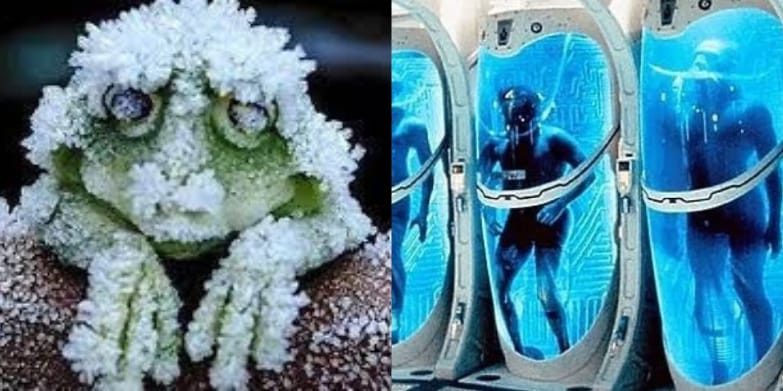Cryopreservation is inspired by the natural ability of animals to survive in harsh conditions using hibernation, this gives hope to humans where they can be preserved and revived potentially. Freezing the human body at extremely low temperatures, essentially putting life on hold until advancements in science and medicine can provide cures for diseases and unlock technologies like flying cars and space travel to distant corners of outer space.
The inspiration for cryopreservation came from observing how animals like the arctic ground squirrel and wood frog enter the state of suspended animation during hibernation. Their metabolism slows down, body temperature drops significantly, and they can even survive being frozen for months. Researchers found that these animals increase the level of glycogen in their bodies before hibernation, a process that helps them to protect their cells and maintain their structure during freezing. Simply freezing a human body without advanced technology could lead to harmful consequences like thickening of the blood, which in turn can damage the circulatory system and organs, it possibly lead to brain death.
Specialized freezing called Cryonics were developed by the scientists to address these challenges, to preserve cells, tissues and organs of the whole human body. This method ignores the chemical activity that could harm biological material and uses vitrification, which eliminates the formation of ice crystals during freezing. With the help of this technique, living objects can be preserved for an indefinite time period.
James Bedford became the first human to undergo cryopreservation after his death in 1967. Since then, 400 people in the United States entrusted their bodies to be preserved at medical foundations. Around 1500 people have signed the documents and are willing to freeze their body after death. However, cryonics is a costly process, and is accessible to wealthier individuals.
Cryopreserved individuals should be considered dead legally and the question of whether they can be revived in the future remains uncertain. Scientists have managed to successfully unfreeze and revive a rabbit brain after weeks of cryopreservation, indicating that vital connections between neurons remained intact. However, the comparison between a rabbit brain and a human brain is complex, liquid nitrogen which is used in the process has a potential to damage cells and tissues from freezing in.
A complex and expensive process of cryonics guarantees a future where humans could be brought back to life. With many scientific and ethical questions that remain unanswered, the potential for a second chance at life is still tempting which is in the realm of uncertainty and ongoing research.

